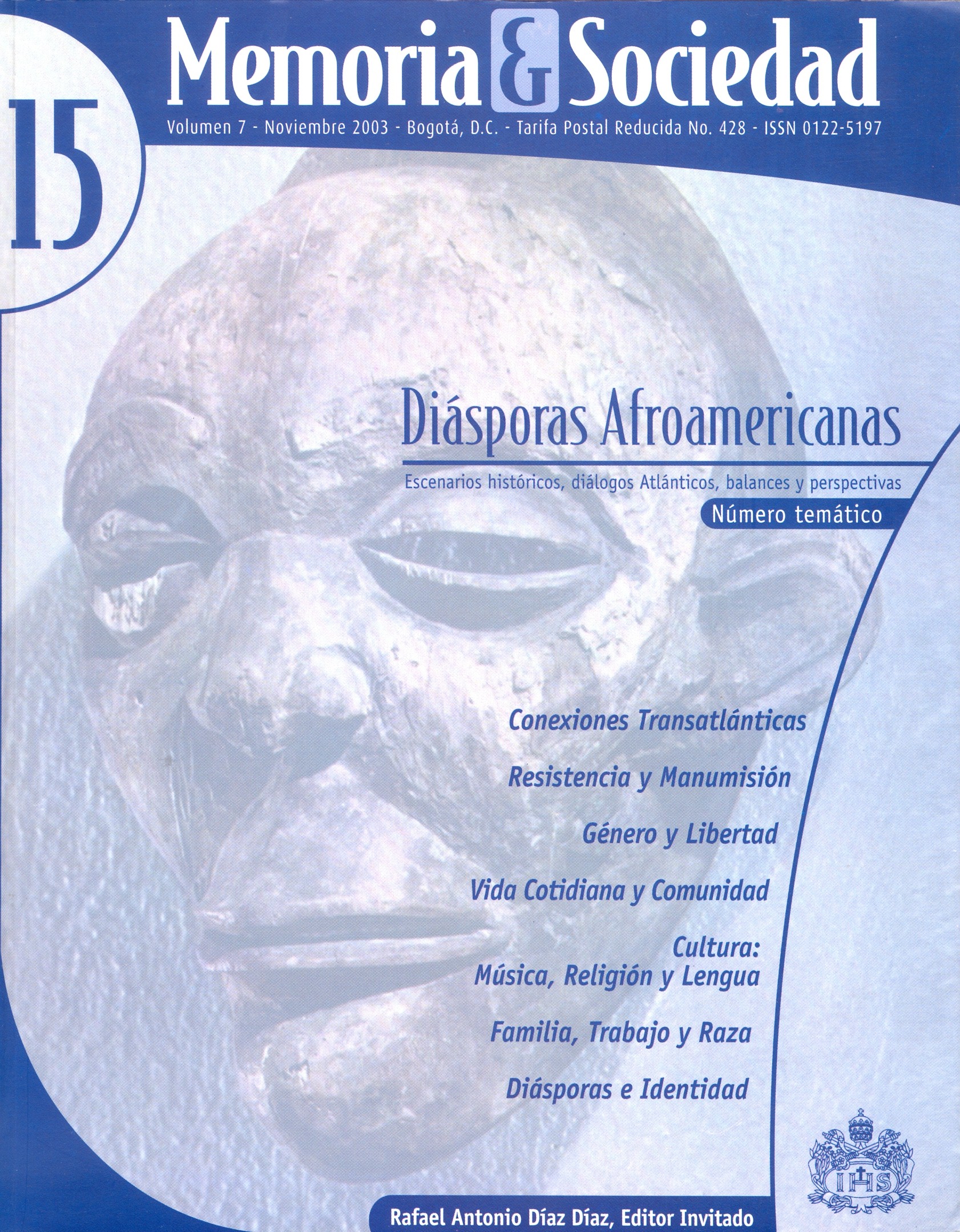Abstract
This research is concerned, primarily, with studying the legislation that was created to regulate the lives of persons brought from Africa to America, at first as slaves. Over the course of time, as massive numbers of Africans arrived in the seventeenth century the legal form of freedom for this population was born-this created a complex society that had an effect on the composition of social networks, the composition of social groups, and prohibitions/permissions, all of which is clearly seen through the attempts at legislative control imposed by the Crown. My revision of the laws of Indies shows the possibility of distinct paths of research. In the essay below, I will concentrate on integration, control and the structure of the social-legal group in question.The journal Memoria y Sociedad is registered under a Creative Commons Attribution 4.0 International Public License. Thus, this work may be reproduced, distributed, and publicly shared in digital format, as long as the names of the authors and Pontificia Universidad Javeriana are acknowledged. Others are allowed to quote, adapt, transform, auto-archive, republish, and create based on this material, for any purpose (even commercial ones), provided the authorship is duly acknowledged, a link to the original work is provided, and it is specified if changes have been made. Pontificia Universidad Javeriana does not hold the rights of published works and the authors are solely responsible for the contents of their works; they keep the moral, intellectual, privacy, and publicity rights.
Approving the intervention of the work (review, copy-editing, translation, layout) and the following outreach, are granted through an use license and not through an assignment of rights. This means the journal and Pontificia Universidad Javeriana cannot be held responsible for any ethical malpractice by the authors. As a consequence of the protection granted by the use license, the journal is not required to publish recantations or modify information already published, unless the errata stems from the editorial management process. Publishing contents in this journal does not generate royalties for contributors.

